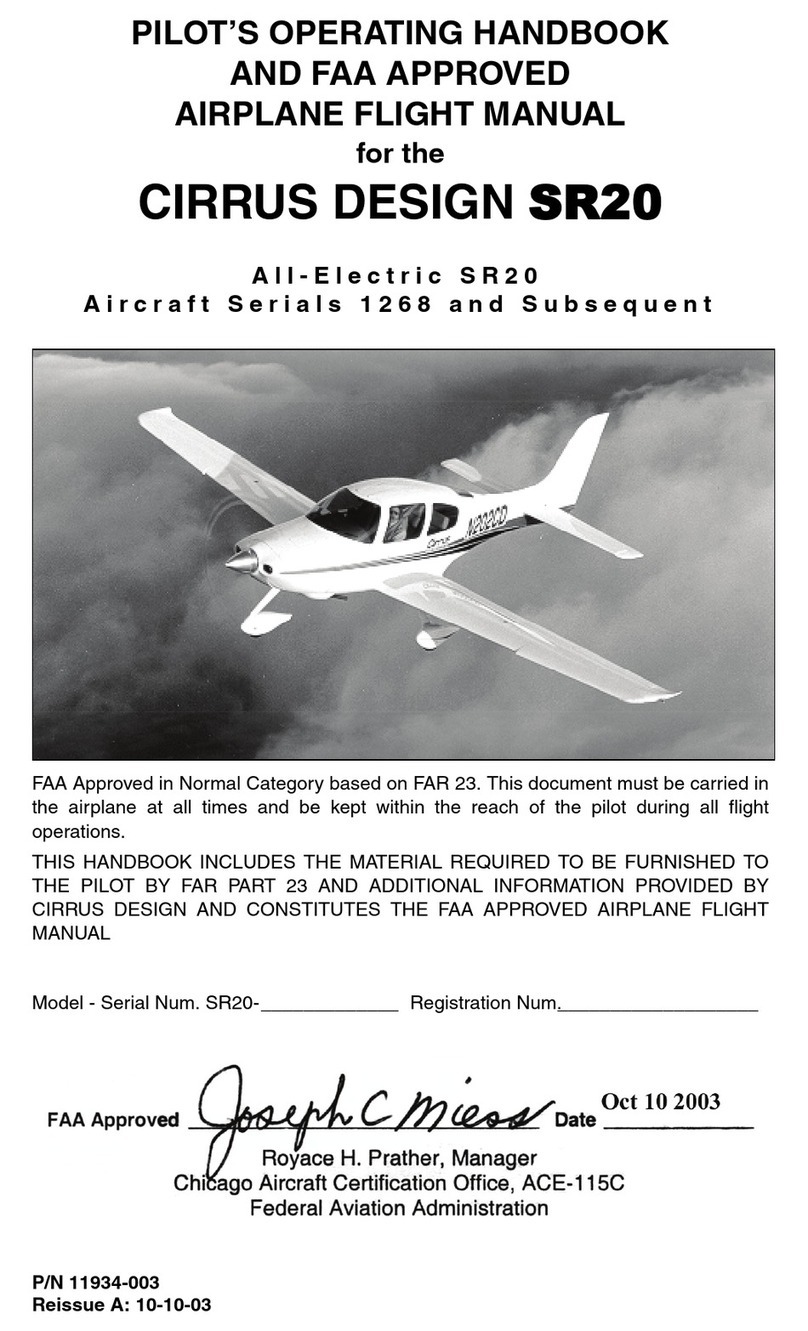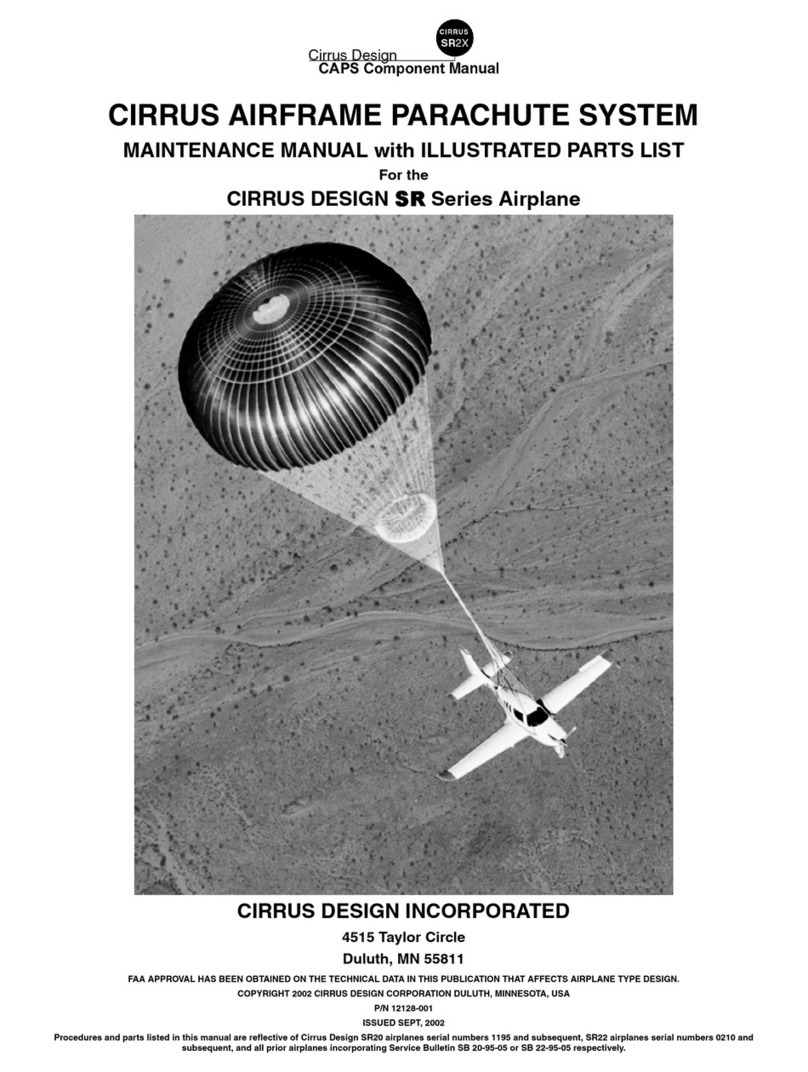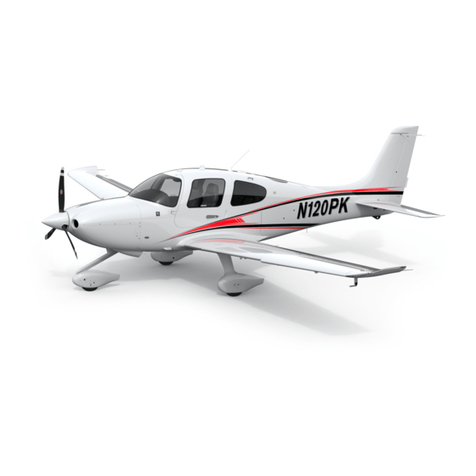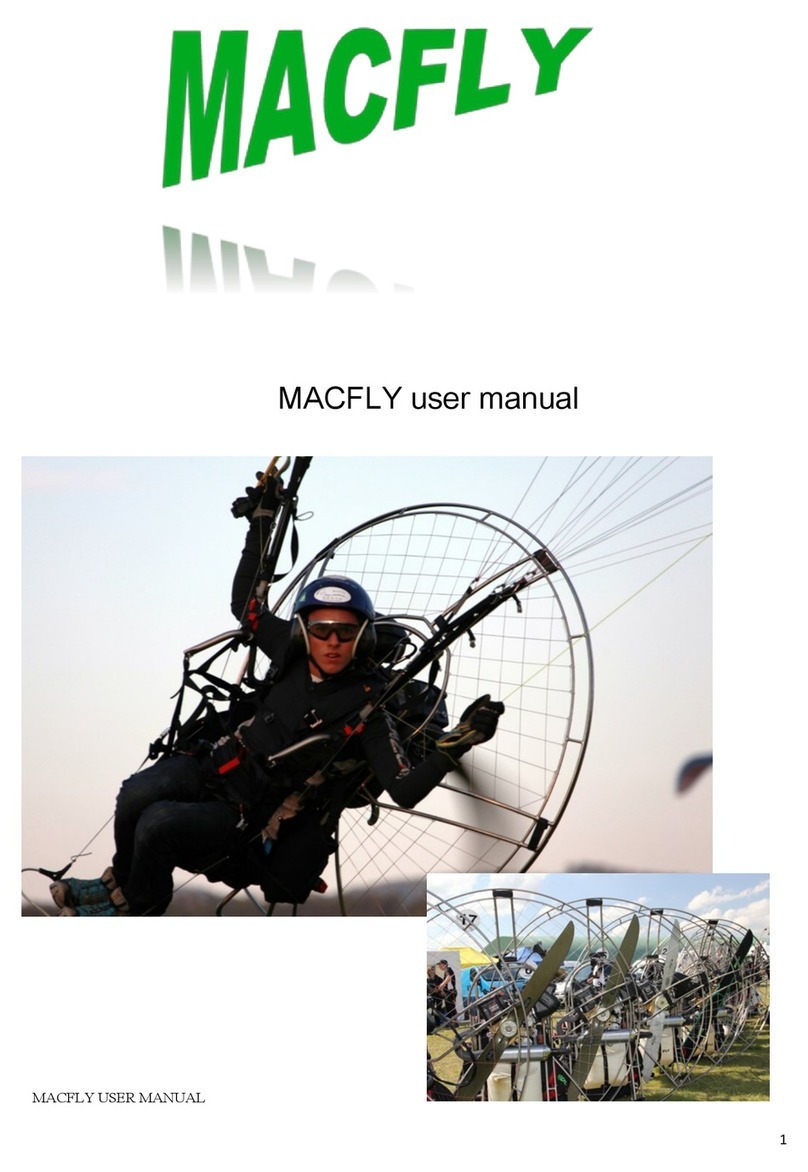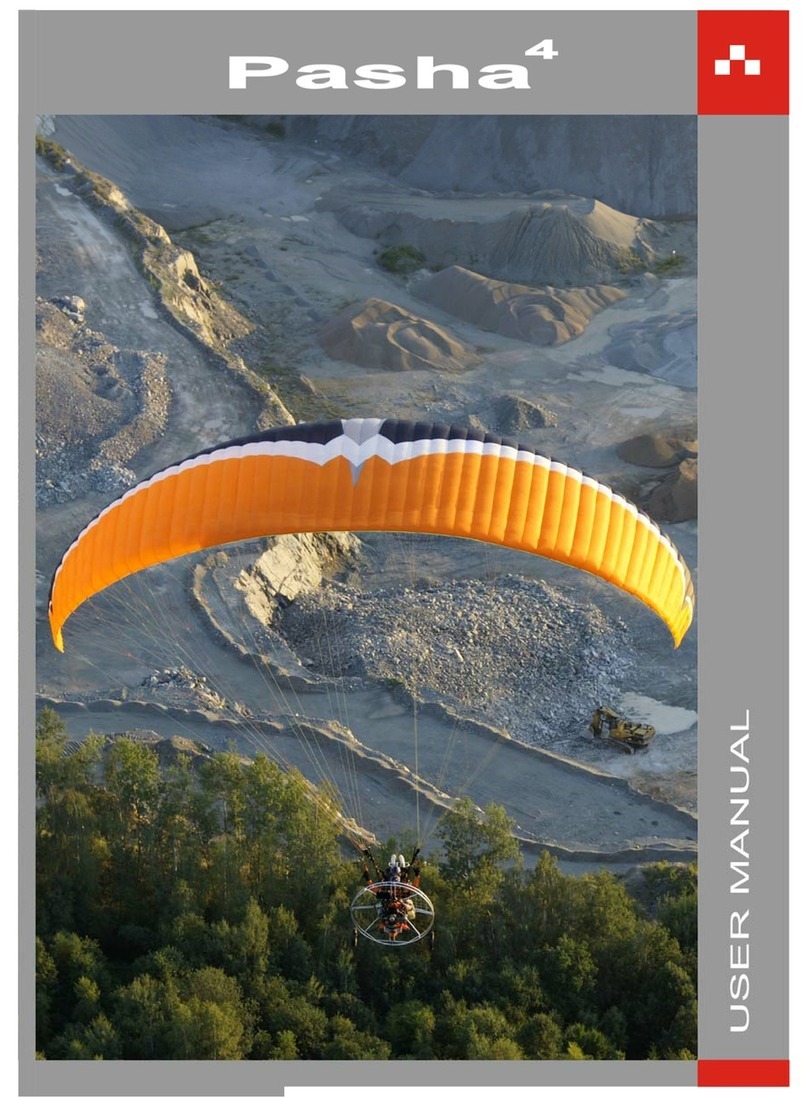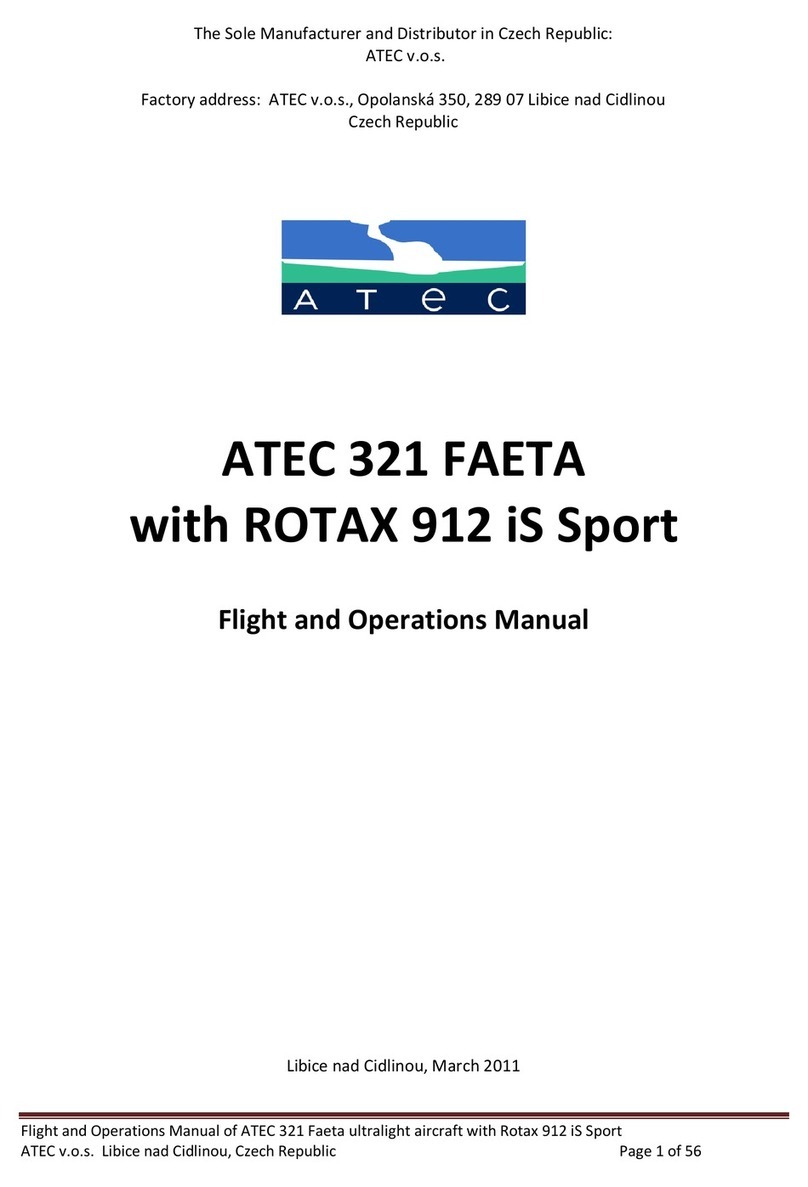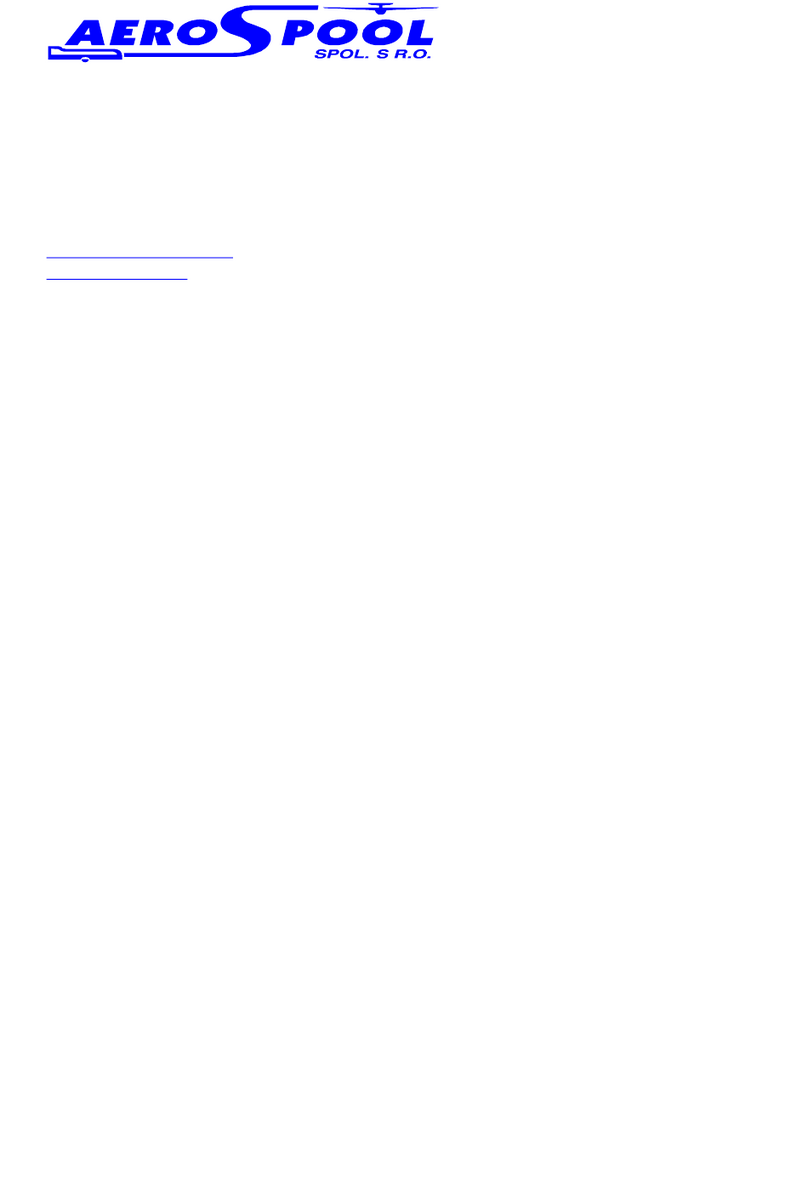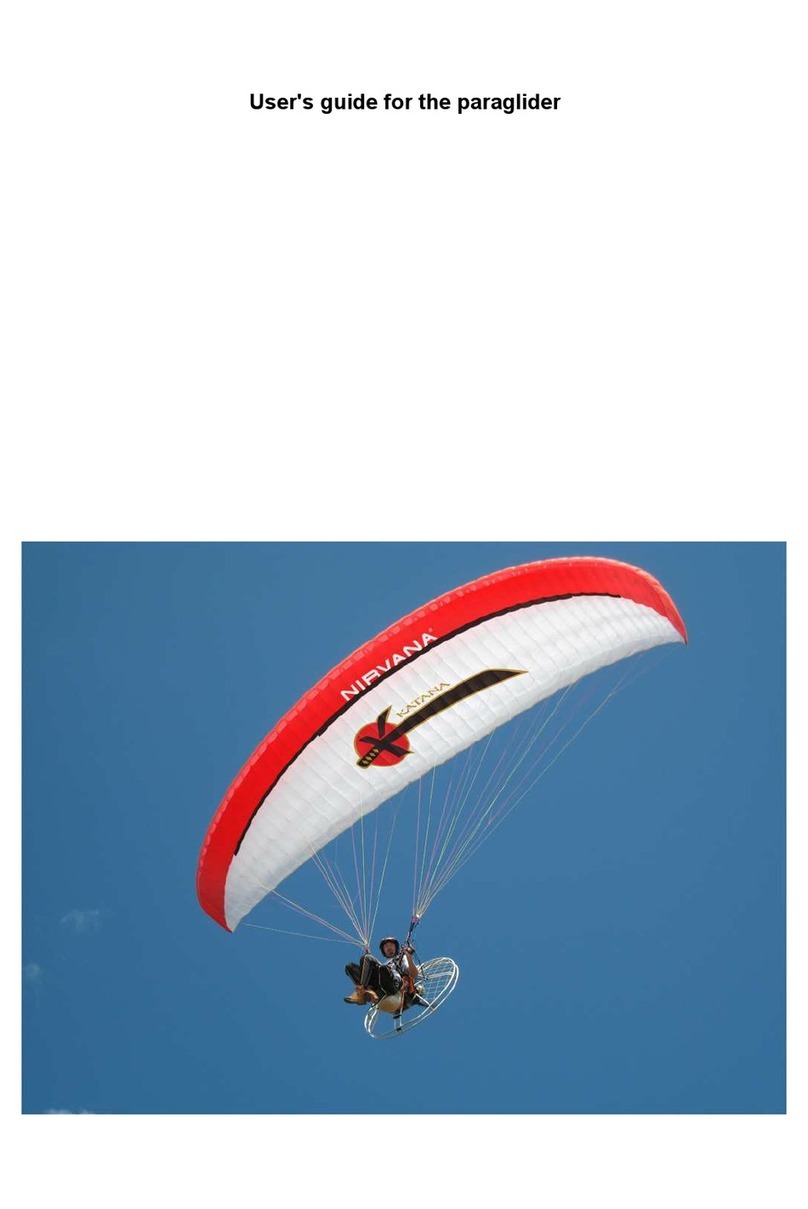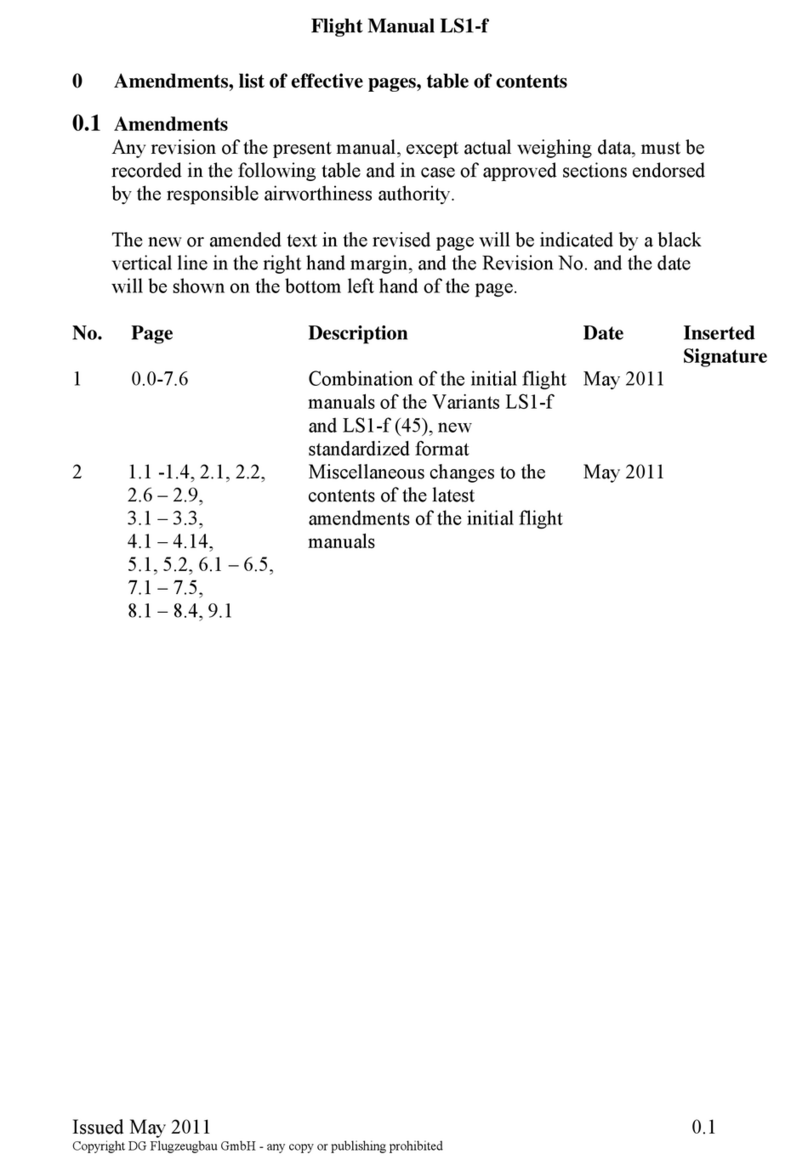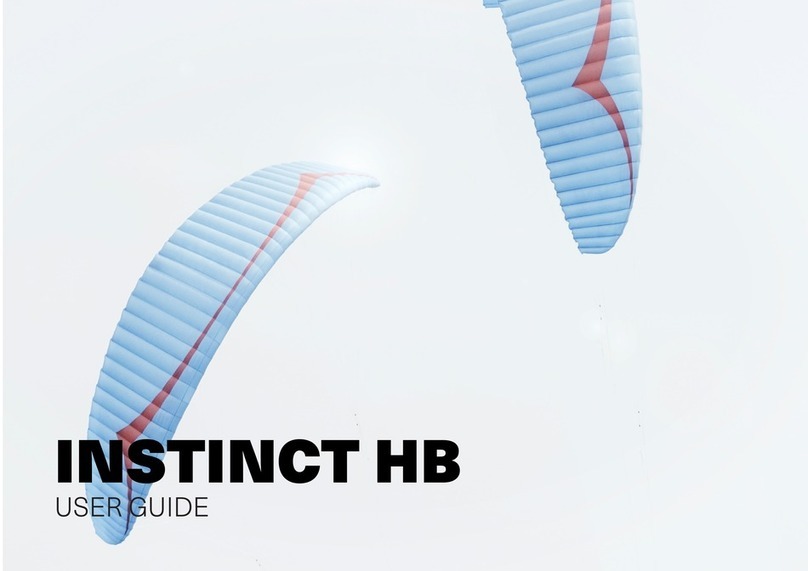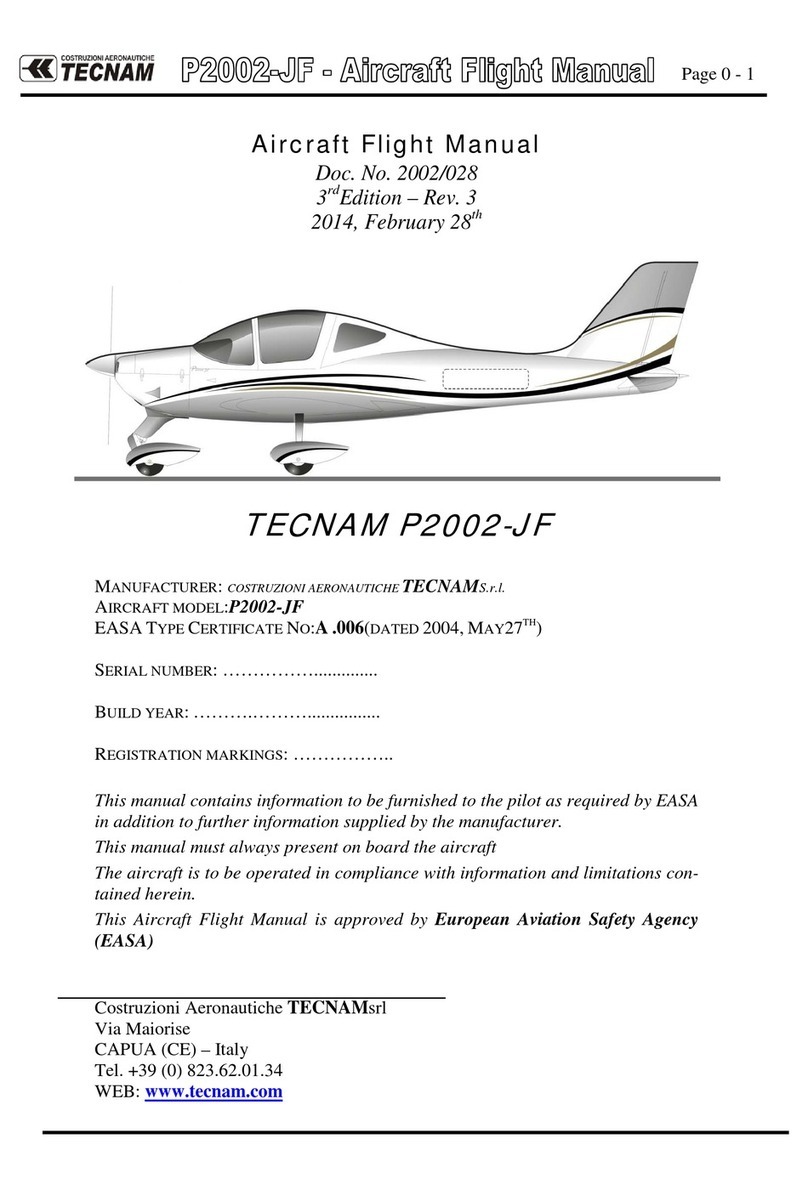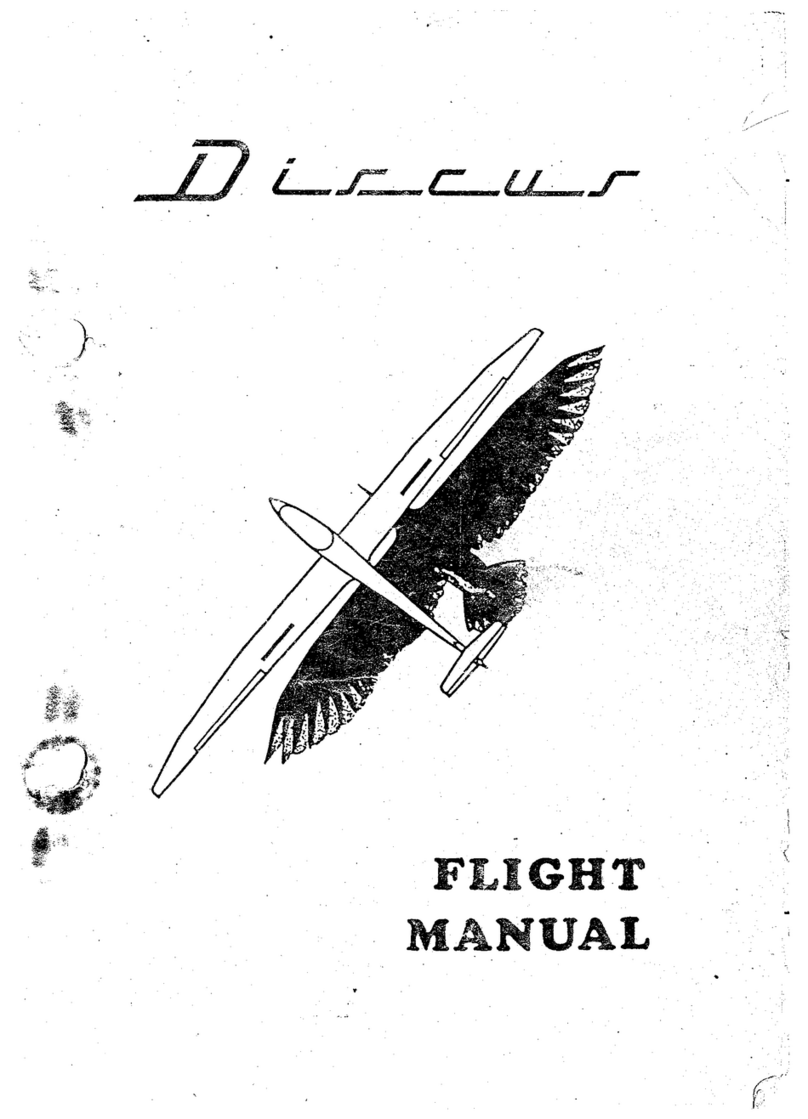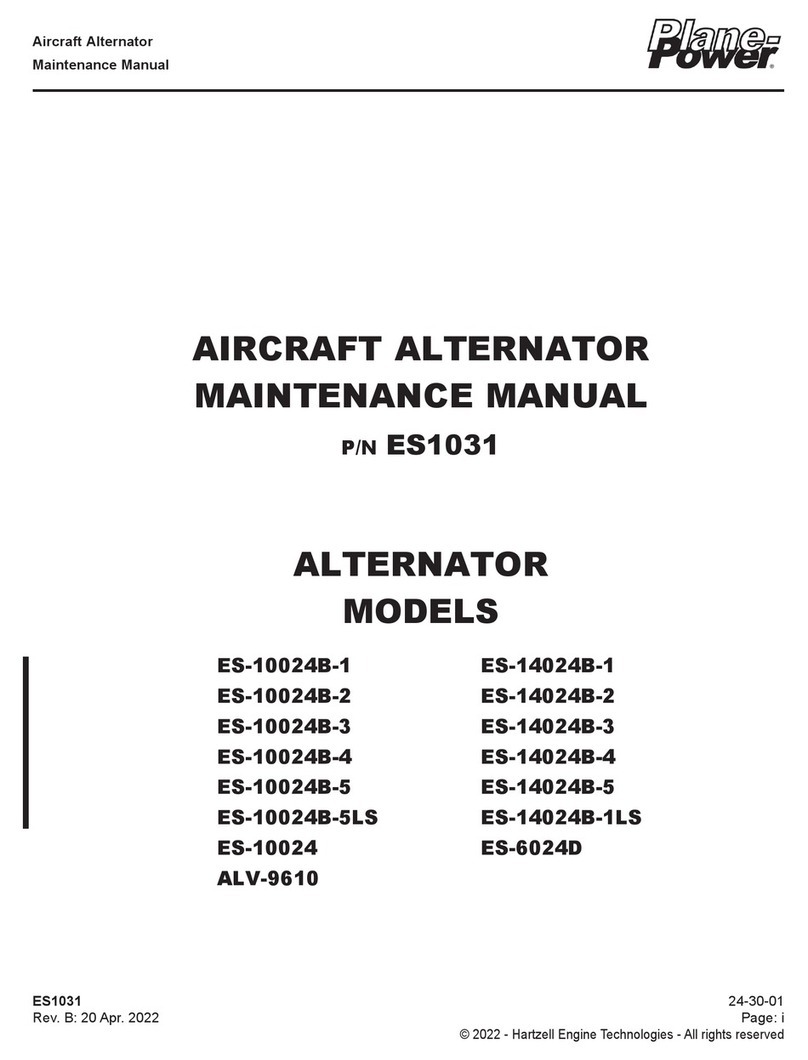CIRRUS DESIGN SR20 Owner's manual

PILOT’S OPERATING HANDBOOK
AND FAA APPROVED
AIRPLANE FLIGHT MANUAL
for the
CIRRUS DESIGN SR20
All-Electric SR20
Aircraft Serials 1268 and Subsequent
FAA Approved in Normal Category based on FAR 23. This document must be carried in
the airplane at all times and be kept within the reach of the pilot during all flight
operations.
THIS HANDBOOK INCLUDES THE MATERIAL REQUIRED TO BE FURNISHED TO
THE PILOT BY FAR PART 23 AND ADDITIONAL INFORMATION PROVIDED BY
CIRRUS DESIGN AND CONSTITUTES THE FAA APPROVED AIRPLANE FLIGHT
MANUAL
Model - Serial Num. SR20-_____________ Registration Num.___________________
Reissue A: 10-10-03 Current Revision: A3
P/N 11934-003

Copyright © 2003 - All Rights Reserved
Cirrus Design Corporation
4515 Taylor Circle
Duluth, MN 55811

P/N 11934-003 i
Cirrus Design Pilot’s Operating Handbook
SR20 Foreword
Foreword
This Pilot’s Operating Handbook (POH or Handbook) has been
prepared by Cirrus Design Corporation to familiarize operators with
the Cirrus Design SR20 airplane. Read this Handbook carefully. It
provides operational procedures that will assure the operator obtains
the performance published in the manual, data designed to allow the
most efficient use of the airplane, and basic information for
maintaining the airplane in a “like new” condition.
• Note •
All limitations, procedures, maintenance & servicing
requirements, and performance data contained in this
Handbook are mandatory for compliance with FAA operating
rules and for continued airworthiness of the airplane.
This Handbook includes the material required to be furnished to the
pilot by the Federal Aviation Regulations (FARs) and additional
information provided by Cirrus Design Corporation and constitutes the
FAA Approved Airplane Flight Manual for the Cirrus Design SR20.
Optional SR20 VFR Configuration (SRV)
An optional VFR only package is available on airplane serial numbers
1337 and subsequent. Data presented within this handbook pertinent
only to the SRV model airplane is prefaced with the effectivity
highlight, “Serials 1337 and subsequent with standard SRV
Configuration”.
Reissue A

ii P/N 11934-003
Pilot’s Operating Handbook Cirrus Design
Foreword SR20
The Handbook
This Pilot’s Operating Handbook has been prepared using GAMA
Specification #1 for Pilot’s Operating Handbook, Revision 2, dated 18
October 1996 as the content model and format guide. However, some
deviations from this specification were made for clarity. The Handbook
is presented in loose-leaf form for ease in inserting revisions and is
sized for convenient storage. Tabbed dividers throughout the
Handbook allow quick reference to each section. Logical and
convenient Tables of Contents are located at the beginning of each
section to aid in locating specific data within that section. The
Handbook is divided into ten sections as follows:
Section 1................................................................................... General
Section 2...............................................................................Limitations
Section 3.......................................................... Emergency Procedures
Section 4.................................................................Normal Procedures
Section 5................................................................... Performance Data
Section 6...........................................Weight & Balance/Equipment List
Section 7............................................. Airplane & Systems Description
Section 8........................................Handling, Servicing & Maintenance
Section 9...........................................................................Supplements
Section 10.................................................................Safety Information
The data presented in this Handbook is the result of extensive flight
tests and is approved by the Federal Aviation Administration. However,
as new procedures or performance data are developed, they will be
sent to the owner of record for each airplane.
• Note •
It is the responsibility of the owner to ensure that the Pilot’s
Operating Handbook is current at all times. Therefore, it is
very important that all revisions be properly incorporated into
this Handbook as soon as they are received.
Reissue A

P/N 11934-003 iii
Cirrus Design Pilot’s Operating Handbook
SR20 Foreword
Revising the Handbook
Two types of revisions may be issued for this Handbook: Numbered
and Temporary.
Temporary revisions are printed on yellow paper, normally cover only
one topic or procedure, and are issued to provide safety related
information or other time sensitive information where the rigor of
providing a numbered revision is not possible in the time allowed. All
the information needed to properly file a temporary revision is included
on the revision itself. Typically, a temporary revision is superseded and
replaced by the next numbered revision. A “Log of Temporary
Revisions” following the “List of Effective Pages” is provided to log
temporary revisions when they are issued. Typically, the “Log of
Temporary Revisions” is replaced at the next numbered revision.
Numbered revisions are printed on white paper, normally cover
several subjects, and are issued as general updates to the Handbook.
Each numbered revision includes an “Instruction Sheet,” a “List of
Effective Pages”, and a “Revision Highlights” page. The “Instruction
Sheet” is intended to assist the manual holder in removing superseded
pages and inserting new or superseding pages. The “List of Effective
Pages” shows the issue or revision status of all pages in the
Handbook. The “Revision Highlights” page gives a brief description of
changes made to each page in the current revision.
Identifying Revised Material
Each page in the Handbook has revision identification at the lower
inside corner opposite the page number. Original issue pages will be
identified by the words “Original Issue” at this location. In the event
that the majority of pages in the Handbook are revised, Cirrus may
determine that it is more effective to reissue the Handbook. Reissued
pages will be identified by the word “Reissue” followed by a letter
indicating the reissue level; for example, “Reissue A” Revised pages
will be identified by the word “Revision” followed by the revision
number at this location; for example, “Revision 2” (Original Issue,
Revision 2) or “Revision B1” (Reissue B, Revision 1).
Revised material on a page can be identified by a change bar located
at the outside page margin. See the outside margin of this page
adjacent to this paragraph for an example. Revision bars are not used
at reissues of the Handbook.
Revision A1

iv P/N 11934-003
Pilot’s Operating Handbook Cirrus Design
Foreword SR20
Revision Service
Revision service for this Handbook is provided at no cost for the Pilot’s
Operating Handbook and FAA Approved Airplane Flight Manual
assigned to an airplane. Additional copies of the Handbook and
revision service can be obtained from Customer Service at Cirrus
Design at the address below.
• Note •
If at any time it is found that the Handbook is not current,
temporary revisions are missing, or applicable supplements
are not included, contact Customer Service at Cirrus Design
immediately.
Customer Service
Cirrus Design Corporation
4515 Taylor Circle
Duluth, MN 55811
Phone: (218) 727-2737
Fax: (218) 727-2148
Supplements
The Supplements section (Section 9) of this Handbook contains FAA
Approved Supplements necessary to safely and efficiently operate the
SR20 when equipped with optional equipment not provided with the
standard airplane or not included in the Handbook. Supplements are
essentially “mini-handbooks” and may contain data corresponding to
most sections of the Handbook. Data in a supplement either adds to,
supersedes, or replaces similar data in the basic Handbook.
Section 9 includes a “Log of Supplements” page preceding all Cirrus
Design Supplements produced for this airplane. The “Log of
Supplements” page can be utilized as a “Table of Contents” for Section
9. If the airplane is modified at a non Cirrus Design facility through an
STC or other approval method, it is the owner’s responsibility to
ensure that the proper supplement, if applicable, is installed in the
Handbook and that the supplement is properly recorded on the “Log of
Supplements” page.
Reissue A

P/N 11934-003 v
Cirrus Design Pilot’s Operating Handbook
SR20 Foreword
Retention of Data
In the event a new title page is issued, the weight and balance data
changes, equipment list changes, or the “Log of Supplements” is
replaced, the owner must ensure that all information applicable to the
airplane is transferred to the new pages and the aircraft records are
current. It is not a requirement that owners retain information, such as
supplements, that is not applicable to their airplane.
Warnings, Cautions, and Notes
Warnings, Cautions, and Notes are used throughout this Handbook to
focus attention on special conditions or procedures as follows:
• WARNING •
Warnings are used to call attention to operating procedures
which, if not strictly observed, may result in personal injury or
loss of life.
• Caution •
Cautions are used to call attention to operating procedures
which, if not strictly observed, may result in damage to
equipment.
• Note •
Notes are used to highlight specific operating conditions or
steps of a procedure.
Reissue A

vi P/N 11934-003
Pilot’s Operating Handbook Cirrus Design
Foreword SR20
Reissue A
Intentionally Left Blank

P/N 11934-003 1-1
Cirrus Design Section 1
SR20 General
Section 1
General
Table of Contents
Introduction .....................................................................................1-3
The Airplane....................................................................................1-6
Engine..........................................................................................1-6
Propeller ......................................................................................1-6
Fuel..............................................................................................1-7
Oil ...............................................................................................1-7
Maximum Certificated Weights .................................................... 1-7
Cabin and Entry Dimensions .......................................................1-7
Baggage Spaces and Entry Dimensions .....................................1-7
Specific Loadings.........................................................................1-7
Symbols, Abbreviations and Terminology....................................... 1-8
General Airspeed Terminology and Symbols ..............................1-8
Meteorological Terminology.........................................................1-9
Engine Power Terminology........................................................1-10
Performance and Flight Planning Terminology.......................... 1-10
Weight and Balance Terminology..............................................1-11
Revision A3

1-2 P/N 11934-003
Section 1 Cirrus Design
General SR20
Intentionally Left Blank
Revision A3

P/N 11934-003 1-3
Cirrus Design Section 1
SR20 General
Introduction
This section contains information of general interest to pilots and
owners. You will find the information useful in acquainting yourself with
the airplane, as well as in loading, fueling, sheltering, and handling the
airplane during ground operations. Additionally, this section contains
definitions or explanations of symbols, abbreviations, and terminology
used throughout this handbook.
• Note •
For specific information regarding the organization of this
Handbook, revisions, supplements, and procedures to be
used to obtain revision service for this handbook, refer to the
“Foreword” immediately following the title page
Reissue A

1-4 P/N 11934-003
Section 1 Cirrus Design
General SR20
Figure 1-1
76" 2-BLADE
74" 3-BLADE
35.5'
11.0'
9.2'
7"
26.0'
SR20_FM01_1004A
NOTE:
• Wing span includes
position and strobe lights.
• Prop ground clearance at
3000 lb - 7" (2 blade),
8" (3 blade).
• Wing Area = 135.2 sq. ft.
Airplane Three View
Revision A3

P/N 11934-003 1-5
Cirrus Design Section 1
SR20 General
11"23'
11"
9'
SR20_FM01_1002
GROUND TURNING CLEARANCE
TURNING RADII ARE CALCULATED USING ONE BRAKE AND
PARTIAL POWER. ACTUAL TURNING RADIUS MAY VARY A S
MUCH AS THREE FEET.
-RADIUS FOR WING TIP
-RADIUS FOR INSIDE GEAR 6"
-RADIUS FOR OUTSIDE GEAR
-RADIUS FOR NOSE GEAR
2"12'
Figure 1-2
Turning Radius
Reissue A

1-6 P/N 11934-003
Section 1 Cirrus Design
General SR20
The Airplane
Engine
Number of Engines.............................................................................. 1
Number of Cylinders............................................................................ 6
Engine Manufacturer ........................................... Teledyne Continental
Engine Model........................................................................IO-360-ES
Fuel Metering.................................................................... Fuel Injected
Engine Cooling ..................................................................... Air Cooled
Engine Type....................................Horizontally Opposed, Direct Drive
Horsepower Rating................................................ 200 hp @ 2700 rpm
Propeller
Hartzell
Propeller Type.............................................................. Constant Speed
Two-Blade Propeller:
Model Number ...................................................BHC-J2YF-1BF/F7694
Diameter .............................................................76.0” (74.5” Minimum)
Three-Blade Propeller:
Model Number ............................................... PHC-J3YF-1MF/F7392-1
Diameter .............................................................74.0” (72.5” Minimum)
Model Number ............................................... PHC-J3YF-1RF/F7392-1
Diameter .............................................................74.0” (72.5” Minimum)
Revision A1

P/N 11934-003 1-7
Cirrus Design Section 1
SR20 General
Fuel
Total Capacity.............................................60.5 U.S. Gallons (229.0 L)
Total Usable...................................................56 U.S. Gallons (212.0 L)
Approved Fuel Grades:
100 LL Grade Aviation Fuel (Blue)
100 (Formerly 100/130) Grade Aviation Fuel (Green)
Oil
Oil Capacity (Sump) .............................................8 U.S. Quarts (7.6 L)
Oil Grades:
All Temperatures ............................................SAE 15W-50 or 20W-50
Below 40 °F (4°C)................................................... SAE 30 or 10W-30
Above 40 °F (4°C) ....................................................................SAE 50
Maximum Certificated Weights
Maximum Gross for Takeoff...................................... 3000 lb (1361 Kg)
Maximum Landing Weight........................................ 2900 lb (1315 Kg)
Maximum Baggage Compartment Loading.................... 130 lb (59 Kg)
Standard Empty Weight ............................................. 2050 lb (930 Kg)
Maximum Useful Load.................................................. 950 lb (431 Kg)
Full Fuel Payload.......................................................... 622 lb (282 Kg)
Cabin and Entry Dimensions
Dimensions of the cabin interior and entry door openings are
illustrated in detail in Section 6.
Baggage Spaces and Entry Dimensions
Dimensions of the baggage area and baggage door opening are
illustrated in detail in Section 6.
Specific Loadings
Wing Loading .................................................... 22.2 lb per square foot
Power Loading................................................................. 15.0 lb per hp
Revision A1

1-8 P/N 11934-003
Section 1 Cirrus Design
General SR20
Symbols, Abbreviations and Terminology
General Airspeed Terminology and Symbols
KCAS Knots Calibrated Airspeed is the indicated airspeed
corrected for position and instrument error. Calibrated
airspeed is equal to true airspeed in standard atmosphere at
sea level.
KIAS Knots Indicated Airspeed is the speed shown on the
airspeed indicator. The IAS values published in this
handbook assume no instrument error.
KTAS Knots True Airspeed is the airspeed expressed in knots
relative to undisturbed air which is KCAS corrected for
altitude and temperature.
VOOperating Maneuvering Speed is the maximum speed at
which application of full control movement will not overstress
the airplane.
VFE Maximum Flap Extended Speed is the highest speed
permissible with wing flaps in a prescribed extended position.
VNO Maximum Structural Cruising Speed is the speed that
should not be exceeded except in smooth air, and then only
with caution.
VNE Never Exceed Speed is the speed that may not be exceeded
at any time.
VPD Maximum Demonstrated Parachute Deployment Speed is
the maximum speed at which parachute deployment has
been demonstrated.
VSStalling Speed is minimum steady flight speed at which the
aircraft is controllable.
VS50% Stalling Speed is minimum steady flight speed at which the
aircraft is controllable with 50% flaps.
VSO Stalling Speed is the minimum steady flight speed at which
the aircraft is controllable in the landing configuration (100%
flaps) at the most unfavorable weight and balance.
Reissue A

P/N 11934-003 1-9
Cirrus Design Section 1
SR20 General
Meteorological Terminology
VXBest Angle of Climb Speed is the speed which results in the
greatest gain of altitude in a given horizontal distance.
VYBest Rate of Climb Speed is the speed which results in the
greatest gain of altitude in a given time.
IMC Instrument Meteorological Conditions are meteorological
conditions expressed in terms of visibility, distance from
cloud, and ceiling less than the minima for visual flight
defined in FAR 91.155.
ISA International Standard Atmosphere (standard day) is an
atmosphere where (1) the air is a dry perfect gas, (2) the
temperature at sea level is 15°C, (3) the pressure at sea
level is 29.92 in.Hg (1013.2 millibars), and (4) the
temperature gradient from sea level to the altitude at which
the temperature is -56.5°C is -0.00198°C per foot and zero
above that altitude.
MSL Mean Sea Level is the average height of the surface of the
sea for all stages of tide. In this Handbook, altitude given as
MSL is the altitude above the mean sea level. It is the
altitude read from the altimeter when the altimeter’s
barometric adjustment has been set to the altimeter setting
obtained from ground meteorological sources.
OAT Outside Air Temperature is the free air static temperature
obtained from inflight temperature indications or from ground
meteorological sources. It is expressed in either degrees
Celsius or degrees Fahrenheit.
• Pressure Altitude is the altitude read from the altimeter
when the altimeter’s barometric adjustment has been set to
29.92 in.Hg (1013 mb) corrected for position and instrument
error. In this Handbook, altimeter instrument errors are
assumed to be zero.
Reissue A

1-10 P/N 11934-003
Section 1 Cirrus Design
General SR20
Engine Power Terminology
Performance and Flight Planning Terminology
• Standard Temperature is the temperature that would be
found at a given pressure altitude in the standard
atmosphere. It is 15° C (59° F) at sea level pressure altitude
and decreases approximately 2° C (3.6° F) for each 1000
feet of altitude increase. See ISA definition.
HP Horsepower is the power developed by the engine.
MCP Maximum Continuous Power is the maximum power that
can be used continuously.
MAP Manifold Pressure is the pressure measured in the
engine’s induction system expressed as in. Hg.
RPM Revolutions Per Minute is engine rotational speed.
• Static RPM is RPM attained during a full-throttle engine
runup when the airplane is on the ground and stationary.
gOne“g” is a quantity of acceleration equal to that of earth’s
gravity.
• Demonstrated Crosswind Velocity is the velocity of the
crosswind component for which adequate control of the
airplane during taxi, takeoff, and landing was actually
demonstrated during certification testing. Demonstrated
crosswind is not considered to be limiting.
• Service Ceiling is the maximum altitude at which the
aircraft at maximum weight has the capability of climbing at
a rate of 100 feet per minute.
GPH Gallons Per Hour is the amount of fuel (in gallons)
consumed by the aircraft per hour.
NMPG Nautical Miles Per Gallon is the distance (in nautical miles)
which can be expected per gallon of fuel consumed at a
specific engine power setting and/or flight configuration.
Reissue A

P/N 11934-003 1-11
Cirrus Design Section 1
SR20 General
Weight and Balance Terminology
• Unusable Fuel is the quantity of fuel that cannot be safely
used in flight.
• Usable Fuel is the fuel available for flight planning.
c.g. Center of Gravity is the point at which an airplane would
balance if suspended. Its distance from the reference datum
is found by dividing the total moment by the total weight of
the airplane.
•Armis the horizontal distance from the reference datum to
the center of gravity (c.g.) of an item. The airplane’s arm is
obtained by adding the airplane’s individual moments and
dividing the sum by the total weight.
• Basic Empty Weight is the actual weight of the airplane
including all operating equipment that has a fixed location in
the airplane. The basic empty weight includes the weight of
unusable fuel and full oil.
MAC Mean Aerodynamic Chord is the chord drawn through the
centroid of the wing plan area.
LEMAC Leading Edge of Mean Aerodynamic Chord is the forward
edge of MAC given in inches aft of the reference datum
(fuselage station).
• Maximum Gross Weight is the maximum permissible
weight of the airplane and its contents as listed in the aircraft
specifications.
•Momentis the product of the weight of an item multiplied by
its arm.
•UsefulLoadis the basic empty weight subtracted from the
maximum weight of the aircraft. It is the maximum allowable
combined weight of pilot, passengers, fuel and baggage.
• Station is a location along the airplane fuselage measured
in inches from the reference datum and expressed as a
number. For example: A point 123 inches aft of the reference
datum is Fuselage Station 123.0 (FS 123).
Reissue A

1-12 P/N 11934-003
Section 1 Cirrus Design
General SR20
• Reference Datum is an imaginary vertical plane from which
all horizontal distances are measured for balance purposes.
•Tareis the weight of all items used to hold or position the
airplane on the scales for weighing. Tare includes blocks,
shims, and chocks. Tare weight must be subtracted from the
associated scale reading.
Reissue A
Other manuals for SR20
3
Table of contents
Other CIRRUS DESIGN Aircraft manuals
